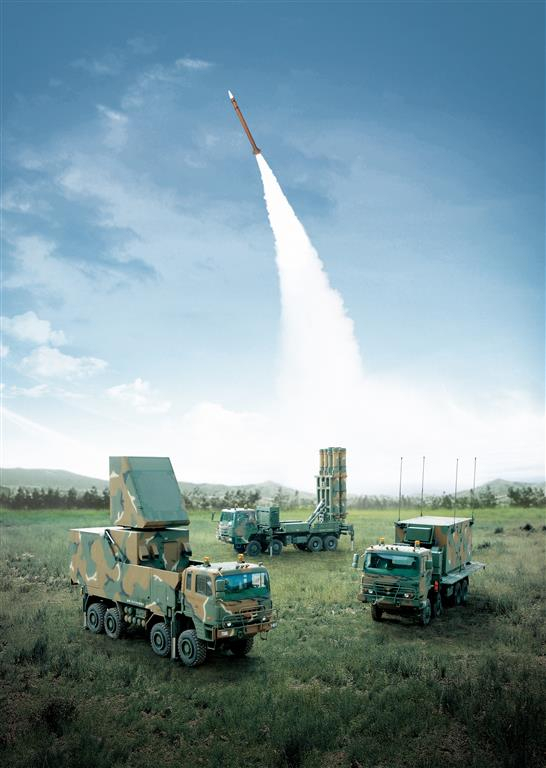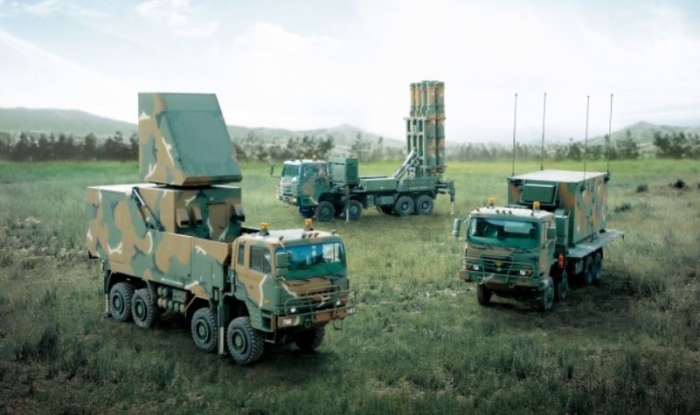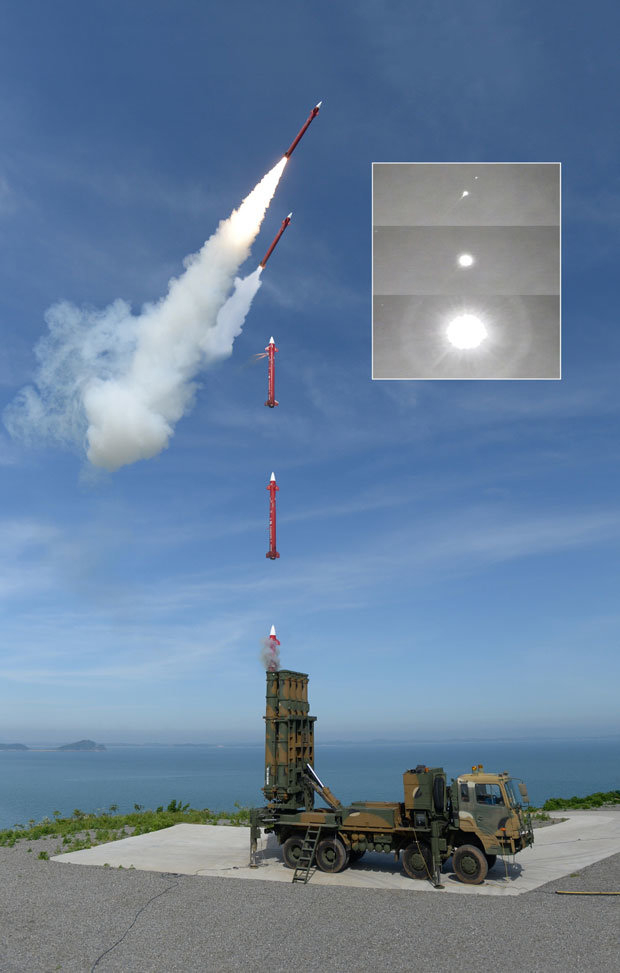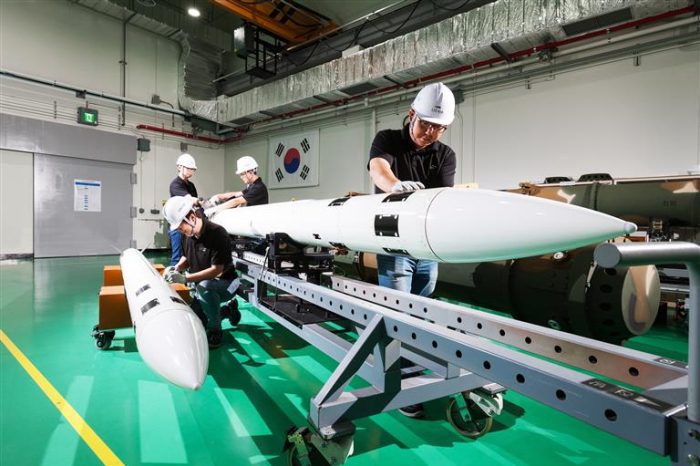Aerospace & Defense
Korea’s LIG close to record $3.5 bn deal to export missile system to UAE
The weapon, also known as Cheongung, or heaven’s bow, was jointly developed by LIG, Hanwha and Kia
By Nov 17, 2021 (Gmt+09:00)
2
Min read
Most Read
LG Chem to sell water filter business to Glenwood PE for $692 million


Kyobo Life poised to buy Japan’s SBI Group-owned savings bank


KT&G eyes overseas M&A after rejecting activist fund's offer


StockX in merger talks with Naver’s online reseller Kream


Mirae Asset to be named Korea Post’s core real estate fund operator



LIG Nex1 Co., a leading South Korean defense company, is close to a record $3.5 billion deal to export its surface-to-air missile system to the United Arab Emirates’ defense ministry.
The UAE’s Ministry of Defense said on Tuesday the two sides are in an advanced stage of talks and close to signing a deal.
The ministry said in a tweet that the mid-range surface-to-air missile (M-SAM) system would constitute a “qualitative addition” to its existing air defense capabilities. It didn’t elaborate further.
A South Korean defense ministry official said Korea’s chief of state-run arms procurement agency, the Defense Acquisition Program Administration (DAPA), is currently in the UAE and expects to sign an agreement by the end of the year.
If a deal is clinched, it would mark Korea’s single largest defense system export in terms of value.
It would also make the UAE the first export customer for the M-SAM, also known as Cheongung, meaning heaven’s bow in Korean.
LIG Nex1 is the main contractor of the air defense system, working in close partnership with other Korean companies such as Hanwha Systems Co., Hanwha Defense Co. and Kia Corp.

HIT-TO-KILL CAPABILITY
The team’s first M-SAM system, Cheongung I, was deployed by the Korean Army in 2015. Cheongung II, an upgraded version, boasts improved maneuverability with a “hit-to-kill” capability against ballistic missiles.
LIG Nex1 began mass producing Cheongung II in 2018 after five years of development and delivered the system to the Korean Army in November 2020 for field deployment.
A battery consists of a mobile multi-function radar made by Hanwha Systems, a command post vehicle made by Kia and Hanwha Defense, and typically four launchers, each carrying eight vertically launched missiles in canisters.

The system is designed to intercept targets at a range of 40 kilometers and an altitude of up to 15 kilometers.
LIG Nex1 and Hanwha are also members of a team that developed Korea’s first homegrown next-generation fighter jet, the KF-21.
In early April, the Korean government unveiled a prototype of the fighter jet, nicknamed Boramae, two decades after it vowed to develop a next-generation supersonic combat plane using local technology for key components.
PRECISION WARFARE SYSTEMS
Established in 1976 as Goldstar Precision, LIG Nex1 is a core business of LIG Group, which was separated from LG Group in 1999. LIG Corp. is the largest shareholder of LIG Nex1 with a 46.36% stake.

LIG Nex1, which develops and produces a wide range of advanced precision electronic warfare systems, is also developing a Korean Positioning System (KPS), a local version of the Global Positioning System (GPS) used by the military to determine precise locations of enemies.
The company aims to launch a commercial KPS service in 2035.
Shares of LIG Nex1 finished up 15.7% at 57,800 won on Wednesday, outperforming the broader market’s 1.2% fall.
Write to Kyung-Min Kang and Hye-Joung Moon at Kkm1026@hankyung.com
In-Soo Nam edited this article.
More to Read
-
 [Exclusive] Urban air mobilityKorean Air joins race for flying car business to rival Hyundai, Hanwha
[Exclusive] Urban air mobilityKorean Air joins race for flying car business to rival Hyundai, HanwhaMay 06, 2021 (Gmt+09:00)
4 Min read
Comment 0
LOG IN


